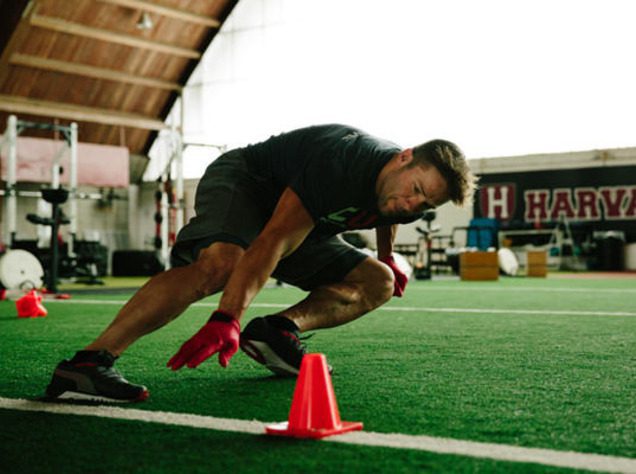
Speed and agility are critical components of athletic performance in various sports, including track and field, soccer, basketball, football, and many others. Both speed and agility involve the ability to move quickly and change direction rapidly. Here’s an overview of these components and some training strategies:
Speed:
- Definition:
- Speed refers to the ability to move quickly from one point to another. It involves the rapid execution of motor tasks and the ability to cover a distance in a short amount of time.
- Types of Speed:
- Acceleration: The ability to increase speed from a stationary position.
- Maximum Speed: The highest speed an athlete can reach during a sprint.
- Speed Endurance: The ability to maintain high speeds over longer distances.
- Training Strategies for Speed:
- Sprint Training: Short, intense sprints with full recovery between repetitions.
- Acceleration Drills: Focusing on quick starts and rapid acceleration.
- Maximal Velocity Training: Incorporating drills to enhance maximum sprinting speed.
- Plyometrics: Jumping exercises to improve explosive power.
Agility:
- Definition:
- Agility is the ability to change direction quickly and efficiently while maintaining control and balance. It involves rapid deceleration, acceleration, and changes of direction in response to external stimuli.
- Components of Agility:
- Change of Direction: Ability to quickly change the body’s position.
- Reaction Time: Rapid response to a stimulus or cue.
- Coordination: Efficient and precise movement patterns.
- Training Strategies for Agility:
- Ladder Drills: Using agility ladders for footwork and coordination exercises.
- Cone Drills: Setting up cones in various patterns to practice changes of direction.
- Reaction Drills: Incorporating stimuli such as visual cues or auditory signals for quick reactions.
- Sport-Specific Drills: Mimicking movements specific to the demands of the sport.
Combined Speed and Agility Training:
- Circuit Training:
- Designing circuits that include a combination of sprinting, agility drills, and plyometrics.
- Shuttle Runs:
- Performing shuttle runs with quick changes of direction to improve both speed and agility.
- Cognitive Training:
- Incorporating cognitive tasks into agility drills to enhance decision-making speed.
- Agility Cone Drills:
- Setting up cone drills that require athletes to navigate through patterns quickly.
- Sports-Specific Training:
- Tailoring training to mimic the movements and demands of the specific sport.
Tips for Speed and Agility Training:
- Dynamic Warm-Up:
- Prioritize a dynamic warm-up that includes movements specific to speed and agility training.
- Proper Technique:
- Emphasize proper running and cutting mechanics to maximize efficiency and reduce the risk of injury.
- Progressive Overload:
- Gradually increase the intensity and complexity of drills to ensure continued improvement.
- Recovery:
- Allow adequate recovery between sets and sessions to prevent fatigue-related decreases in performance.
- Consistency:
- Regularly incorporate speed and agility training into the overall fitness program.
- Sport-Specificity:
- Tailor training to the specific demands of the sport to enhance transferability.
- Incorporate Variety:
- Keep workouts varied to prevent monotony and engage different muscle groups and movement patterns.
- Feedback and Analysis:
- Provide athletes with feedback on their technique and performance. Video analysis can be useful for identifying areas for improvement.
Speed and agility training should be integrated into a well-rounded athletic development program. Athletes can benefit from a combination of structured drills, sport-specific exercises, and a focus on proper technique to enhance their ability to move quickly and respond rapidly in various sports scenarios.
